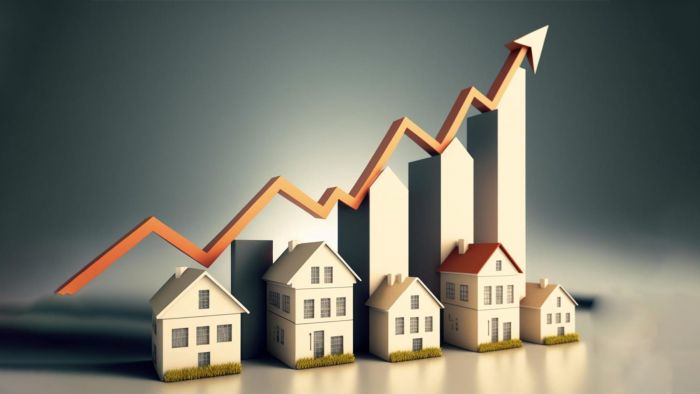The real estate industry in 2025 is evolving far beyond location and square footage. Today’s buyers, renters, and investors are making decisions based on comfort, efficiency, wellness, and long-term value—a shift fueled by lifestyle changes, climate concerns, and the integration of service-based amenities. From how homes are cleaned and maintained to how they support quality sleep and mental well-being, real estate in 2025 is about experience, not just space.
We’ve interviewed four industry voices representing different service sectors of real estate—from plumbing to property acquisition—to provide a 360-degree view of where the market is headed. This article dives deep into emerging trends, with expert commentary on how homeowners, investors, and developers can thrive in the current landscape.

The global health crisis has permanently shifted how people view their homes. Wellness is now a must-have—not a luxury—and features like clean air systems, toxin-free materials, and proper plumbing infrastructure play a huge role in home value.
Desmond Dorsey, CMO of Emergency Master Plumbing & Air, explains the shift in buyer mentality:
“In 2025, buyers ask about air quality and pipe conditions before even checking out the kitchen. We’re seeing demand surge for upgraded HVAC systems with UV filtration and tankless water heaters for efficiency and safety. Smart buyers know that healthy homes retain value longer—and require fewer costly repairs later.”
More buyers are requesting:
Wellness-centric real estate is rising, with many developers partnering with service providers to pre-install smart systems that monitor air, water, and temperature. Expect “certified healthy homes” to become a major new listing trend in 2025.
With interest rates fluctuating and housing affordability becoming a central issue, the market in 2025 is favoring speed and simplicity. That’s why cash buyers and flexible homebuying companies are becoming the new power players.
Eli Pasternak, Founder & CEO of Liberty House Buying Group, highlights how investor agility has become essential:
“The real estate landscape has split in two—those who can move fast and those who miss opportunities. We’re closing properties in under 7 days in many cases. In this market, sellers want certainty and speed. That’s where cash offers shine, especially in distressed or transitional areas.”
This trend is reinforced by key market stats:
Investors are leveraging data platforms to target off-market deals, rental conversions, and distressed properties. Speed and transparency have become more valuable than traditional homebuying perks like staging or inspections.
Post-COVID, cleanliness has moved from a cosmetic concern to a structural one. Buyers and tenants now ask how properties are maintained, cleaned, and sanitized before moving in. This trend is even more critical in multi-unit buildings, commercial properties, and rental homes.
Aaron Dewit, Owner of Commercial Cleaning Depot, explains the long-term implications:
“Cleanliness is now a value driver, not just a selling point. Tenants and buyers want to know that spaces are sanitized, HVAC filters are changed regularly, and mold is not an issue. A clean property is easier to sell, rent, and insure. In fact, we’ve seen some clients increase sale value by 8–12% just by implementing professional cleaning regimens.”
Key elements in 2025’s property maintenance checklist:
Cleanliness contributes to perceived value, and in the age of online reviews and virtual walkthroughs, a visibly well-maintained space sells faster.
A surprising new player in the real estate conversation? Sleep quality. With the rise of wellness-conscious buyers and renters, the way a property supports healthy sleep is becoming a serious differentiator. Noise levels, light pollution, air circulation, and thermal insulation all impact sleep—and smart developers are taking notice.
Martin Seeley, Senior Sleep Expert of Sleep Company, connects sleep wellness with property design:
“Home buyers in 2025 are asking new questions—‘How quiet is the neighborhood at night?’ ‘Do the windows block out city noise?’ We’re even seeing buyers invest in blackout window installations or sleep-optimized room designs. Good sleep has become a non-negotiable for mental health, so the homes that support it are far more desirable.”
Sleep-focused upgrades that are trending in listings:
Luxury buildings are beginning to advertise “rest-optimized layouts,” and Airbnb hosts are seeing higher ratings when sleep quality is mentioned in guest reviews. The idea of a bedroom as a sleep sanctuary is becoming mainstream.
In 2025, properties that offer pre-built service partnerships—from plumbing and air care to cleaning and sleep optimization—are commanding higher prices. Buyers want move-in-ready homes that are already connected to essential services.
This includes:
Real estate agents are bundling these services as added value, creating a smoother transition for both owners and renters. This approach is especially popular among busy buyers, remote workers, and families relocating across state lines.
While smart home tech is booming—lighting, security, HVAC automation—it’s the human service layer that makes these features valuable. A water sensor that alerts a plumber is better than one that simply sends a notification. A smart thermostat backed by HVAC service creates more peace of mind.
2025 is the year that tech meets service. Homes that integrate smart features with on-call partners are commanding premium prices and higher rent yields.
Examples include:
Buyers are more comfortable paying for tech-enabled peace of mind than luxury items that add clutter or require manual upkeep.
As the real estate world becomes more data-driven and service-oriented, buyers and investors are no longer just looking for square footage—they’re looking for function, health, and reliability. Homes that promote clean air, good sleep, smart service connections, and efficient layouts are winning over traditional aesthetic or curb appeal.
Expert voices like Desmond Dorsey, Eli Pasternak, Aaron Dewit, and Martin Seeley confirm what market data is already showing—real estate is no longer about walls and roofs; it’s about lifestyle delivery systems.
For buyers, that means asking better questions. For sellers, it means showcasing service partnerships and health-first features. And for investors, it means understanding that long-term ROI depends as much on wellness and comfort as it does on comps and cap rates.
2025 is the year real estate became personal. And that shift is only just beginning.
Be the first to post comment!